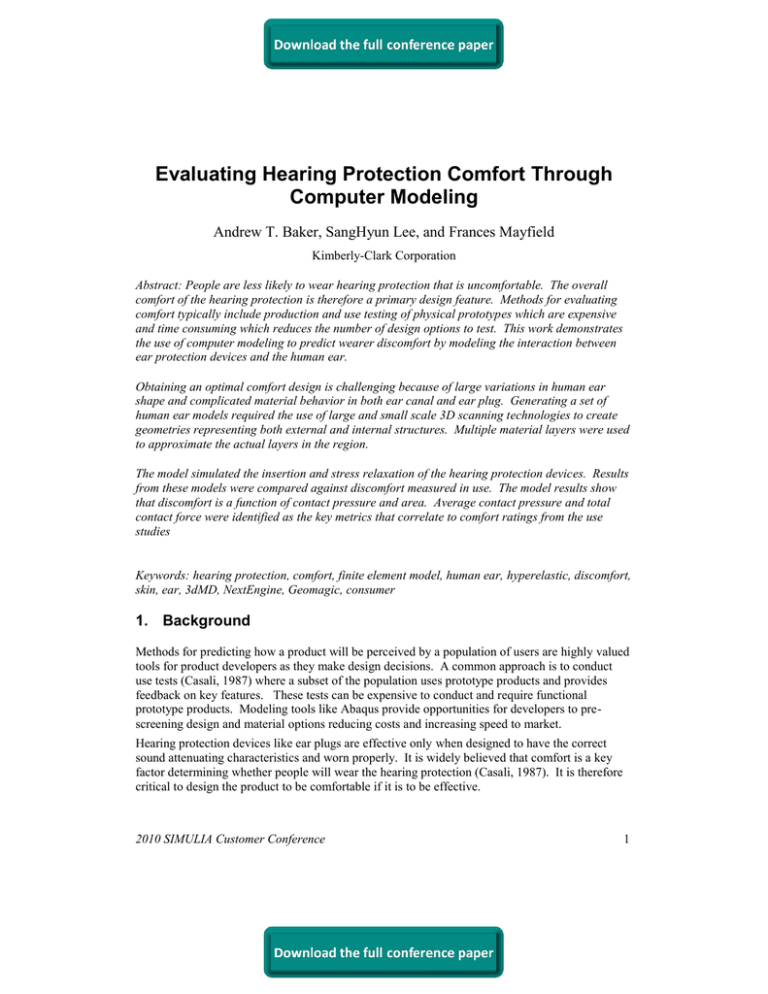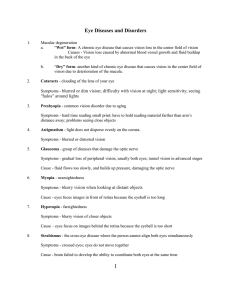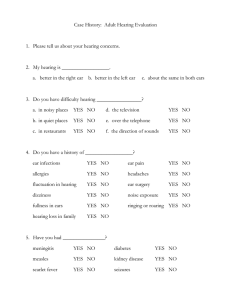Evaluating Hearing Protection Comfort Through Computer Modeling
advertisement

Evaluating Hearing Protection Comfort Through Computer Modeling Andrew T. Baker, SangHyun Lee, and Frances Mayfield Kimberly-Clark Corporation Abstract: People are less likely to wear hearing protection that is uncomfortable. The overall comfort of the hearing protection is therefore a primary design feature. Methods for evaluating comfort typically include production and use testing of physical prototypes which are expensive and time consuming which reduces the number of design options to test. This work demonstrates the use of computer modeling to predict wearer discomfort by modeling the interaction between ear protection devices and the human ear. Obtaining an optimal comfort design is challenging because of large variations in human ear shape and complicated material behavior in both ear canal and ear plug. Generating a set of human ear models required the use of large and small scale 3D scanning technologies to create geometries representing both external and internal structures. Multiple material layers were used to approximate the actual layers in the region. The model simulated the insertion and stress relaxation of the hearing protection devices. Results from these models were compared against discomfort measured in use. The model results show that discomfort is a function of contact pressure and area. Average contact pressure and total contact force were identified as the key metrics that correlate to comfort ratings from the use studies Keywords: hearing protection, comfort, finite element model, human ear, hyperelastic, discomfort, skin, ear, 3dMD, NextEngine, Geomagic, consumer 1. Background Methods for predicting how a product will be perceived by a population of users are highly valued tools for product developers as they make design decisions. A common approach is to conduct use tests (Casali, 1987) where a subset of the population uses prototype products and provides feedback on key features. These tests can be expensive to conduct and require functional prototype products. Modeling tools like Abaqus provide opportunities for developers to prescreening design and material options reducing costs and increasing speed to market. Hearing protection devices like ear plugs are effective only when designed to have the correct sound attenuating characteristics and worn properly. It is widely believed that comfort is a key factor determining whether people will wear the hearing protection (Casali, 1987). It is therefore critical to design the product to be comfortable if it is to be effective. 2010 SIMULIA Customer Conference 1





